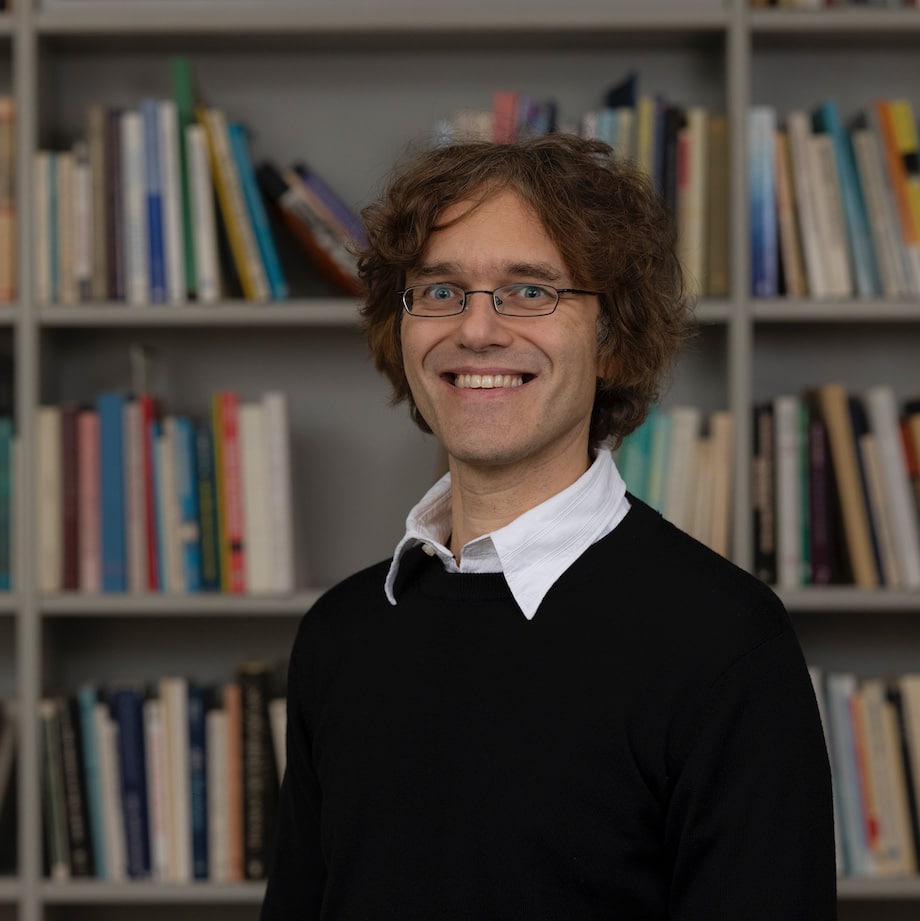Our People
Professor Adam Kirrander

Professor Adam Kirrander
- Fellow and Tutor in Chemistry
- Professor of Physical and Theoretical Chemistry
I first realised the beautiful link between light-matter interactions, chemistry, and quantum mechanics as a biophysics student at Uppsala University (Sweden). Ever since, I have been drawn to questions that relate to how chemistry can be understood in terms of the motion of nuclei and electrons. In my research I try to understand how novel light-matter and particle-matter interactions can help us elucidate dynamic processes in matter.
I have a DPhil in theoretical chemistry from Oxford with Prof. Mark Child (FRS), did a postdoc in ultrafast spectroscopy with Prof. Helen Fielding at UCL, and learned theoretical spectroscopy as a Marie Curie Fellow with Dr Christian Jungen at Laboratoire Aimé Cotton. Following a year as visiting scientist at ITAMP (Harvard), I started my own research group at the University of Edinburgh. I moved to Oxford in 2022. I am Tutor in Chemistry at St. Peter's College and Professor of Physical and Theoretical Chemistry at the University.
Teaching
At St Peter's College, I teach physical chemistry to our Chemistry undergraduates. I delight in teaching material that elucidates the atomistic underpinnings of our world, with concepts that span chemistry, physics, and mathematics.
I have taught chemistry students at University of Edinburgh and at University College London, engineering students at Uppsala University, mathematics students at the African Institute of Mathematical Science, and physics students at Université Paris-Sud. Exposure to different cultures and teaching styles has made my teaching adaptive and responsive, and I cherish the opportunity to interact with students with varied intellectual and cultural backgrounds.
Research
My research interests span ultrafast imaging, quantum dynamics, and photochemistry. My tools are mainly theory and computations, with very close connections to experiments.
New facilities and photon technologies usher in a new era of ultrafast imaging that stands to transform many domains of science where quantum-level dynamics plays a central role, including chemistry. I aim to develop new techniques for ultrafast imaging of chemical reactions by exploiting these opportunities. I have a strong track record for proposing novel measurements at x-ray free-electron lasers (XFELs) and ultrafast electron sources. In this, I collaborate with leading groups worldwide and am involved in the entire lifecycle of experiments, from conception through to execution, interpretation, and analysis.
This collaborative and interdisciplinary research involves facility staff, experimentalists, and theoreticians, with the collaborative aspect celebrated by the Royal Society of Chemistry Horizon Prize 2021. Recent highlights from our work include:
Characterisation of excited state charge transfer in a molecule (Proceedings of the National Academy of Science, 2021)
Direct observation of the changes in electronic structure upon photoexcitation (Nature Communications, 2020)
Structural determination of an excited molecule (Nature Chemistry, 2019)
Mapping a photochemical reaction by electron scattering (Nature Chemistry, 2019)
This research has been funded by the U.S. Department of Energy, EPSRC, STFC, and the Leverhulme Trust in recognition of the importance of matching investments in new facilities by investments in science capability at these facilities. Our theoretical work addresses the physics of the experiments and develops methods to predict observables and interpret experiments.
I was Natural Sciences Fellow at the Swedish Collegium for Advanced Study 2021-22, the US Department of Energy has highlighted our previous work as a major breakthrough, and I was a finalist in the Science Breakthrough of the Year (Physical Sciences Category) at Falling Walls 2020. I have co-chaired several international conferences, including two Faraday Discussions, and played a central role in the preparation of the UK-XFEL Science Case for the STFC. Since 2020, I hold a visiting position at Brown University.